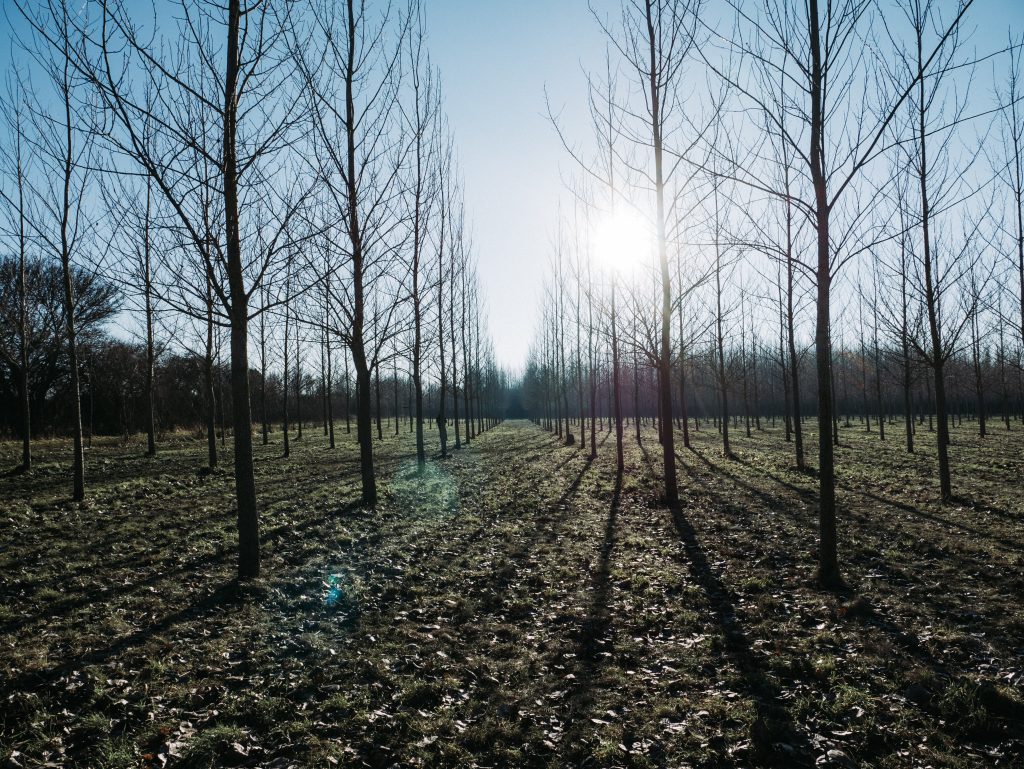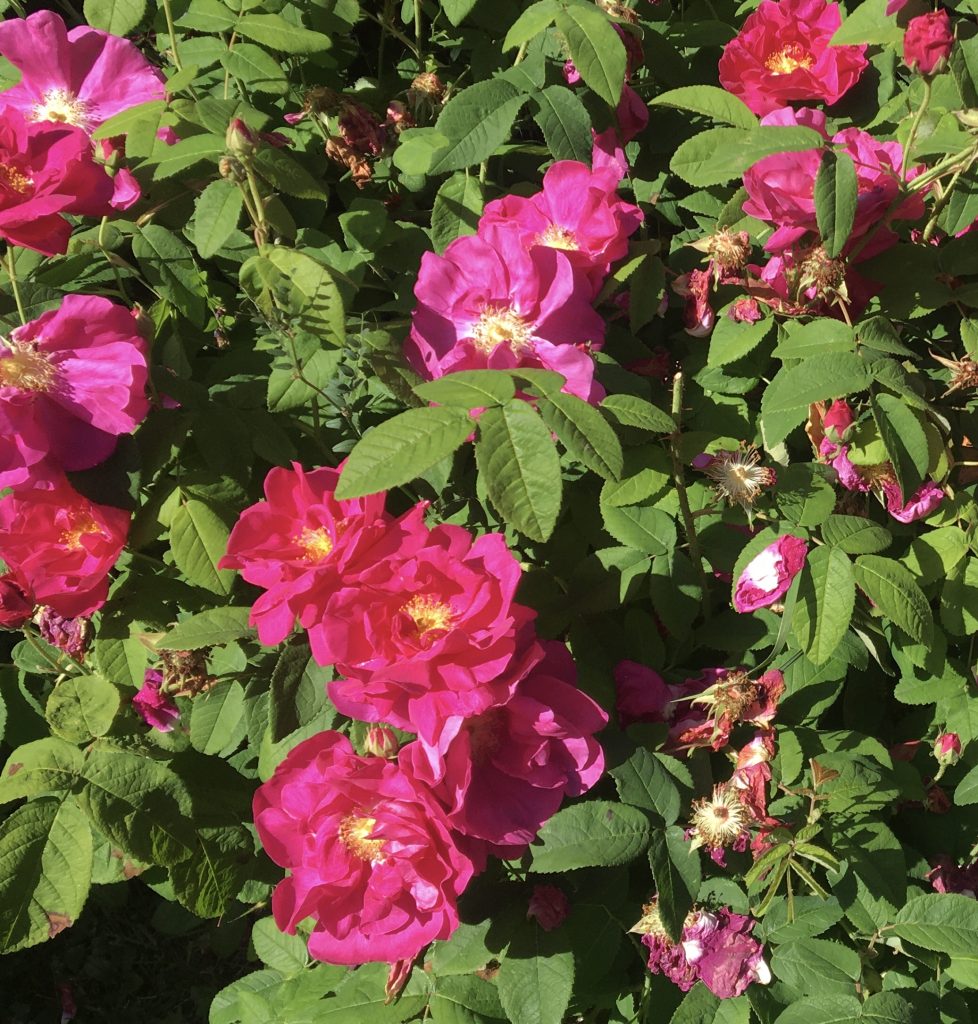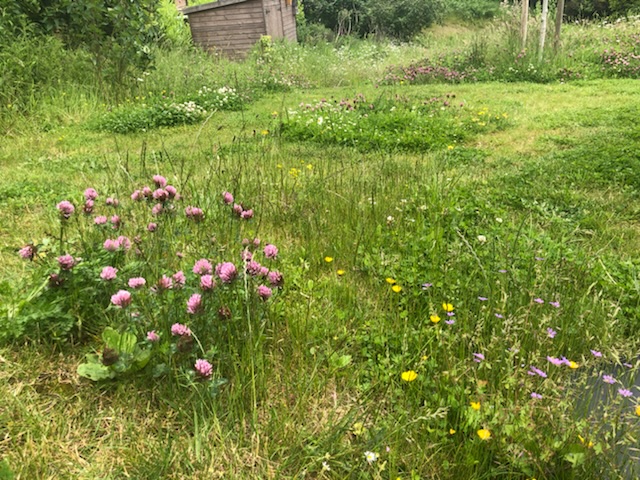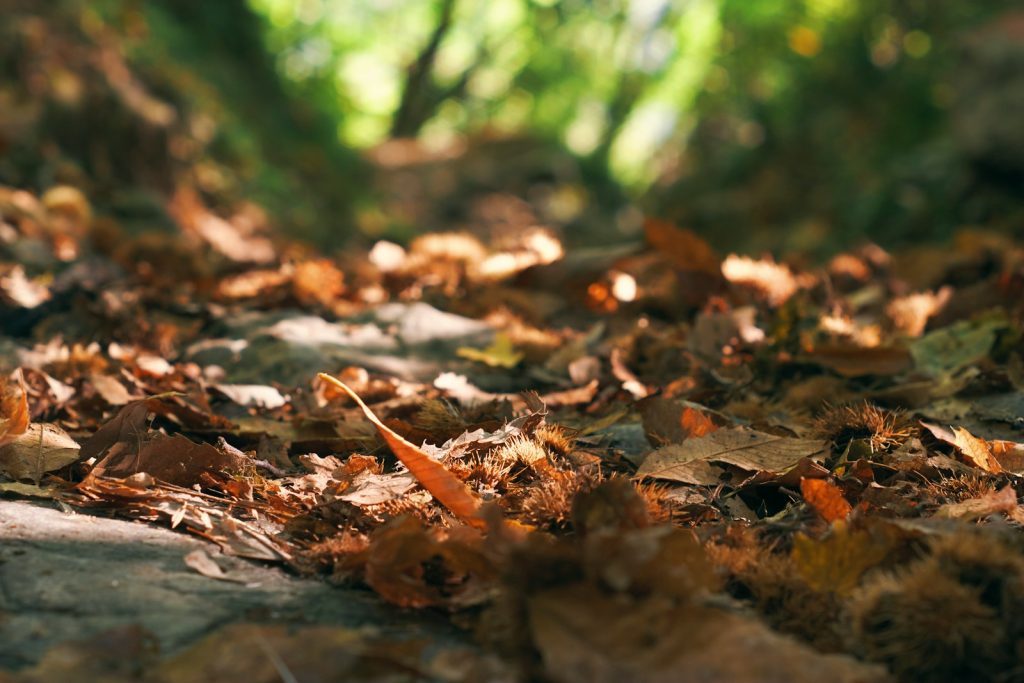The Garden in November
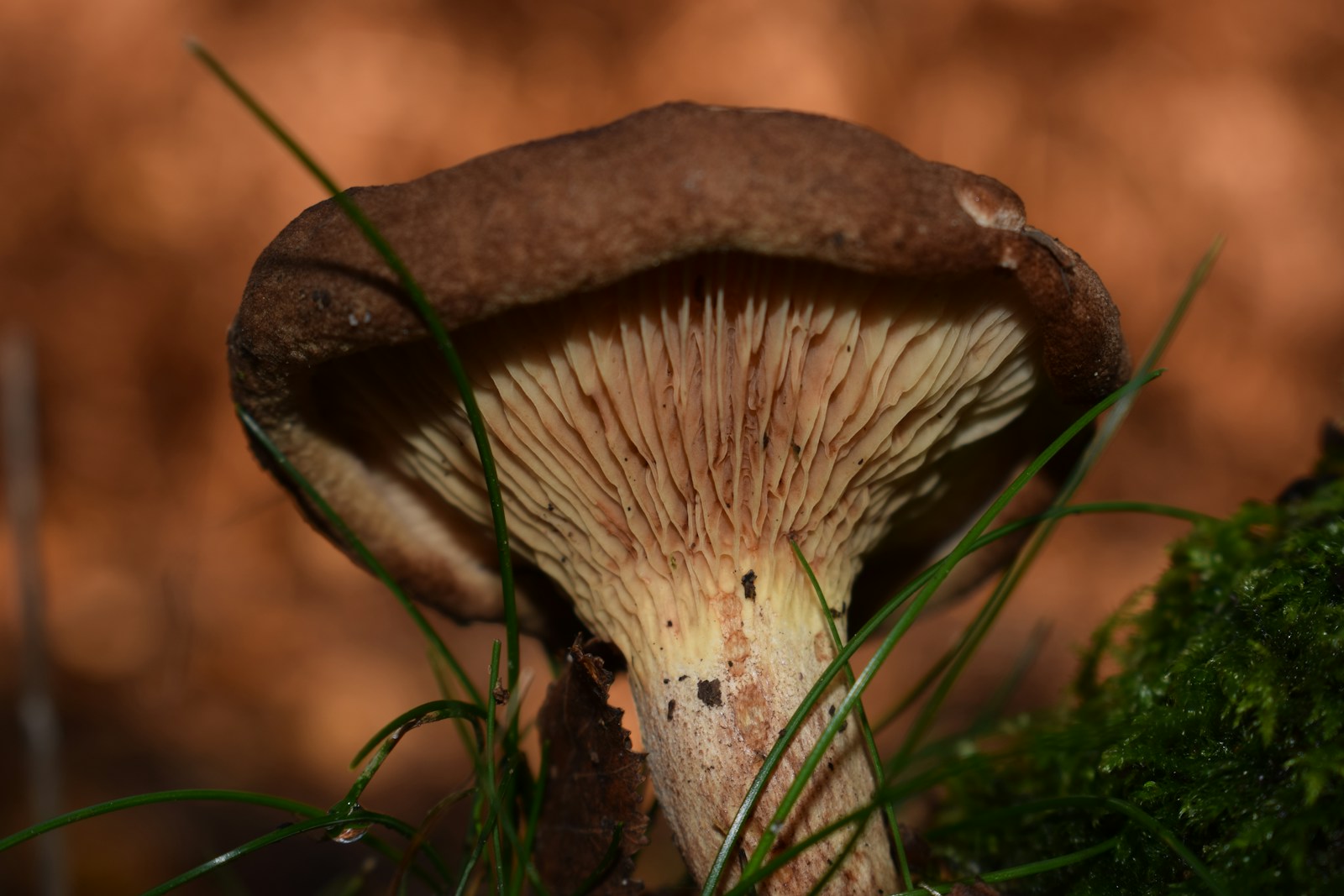
“This is the month of nuts and nutty thoughts — that November whose name sounds so bleak and cheerless — perhaps its harvest of thought is worth more than all the other crops of the year.” — Henry David Thoreau
In November we are invited to welcome the increasing inwardness and fruitful darkness celebrated at Samhain/All Saints Day at the beginning of the month. Outer nature progressively loses its beauty and form as the Earth continues her deep in-breath (which began in Midsummer) towards the Midwinter Solstice at Yule/Christmas. As a gardener, celebrating this inward mood is easier said than done – the weather can be wet, cold and windy, and at the end of October the clocks have gone back an hour, meaning the work day shrinks, culminating in the shortest days of December becoming dark at 4 pm.
So what sort of tasks can we do to feel in tune with this dark, cold but transformative time of year?
Firstly, the leaves can help, falling now, sometimes slowly, sometimes quickly. The Ash in particular seems to drop their bright yellow leaves almost overnight, whilst the Oak is more leisurely, dropping handfuls of their leaves every day from now until Christmas. One of my favourite gardening jobs in November is leaf raking on lawns: firstly it provides a way of keeping warm in challenging weather and secondly, I can make ‘leaf mould’ (composted leaves) which is a great garden resource. The leaves take two years to rot so keep them separate from the usual compost, either in a wire cage, in a hessian leaf sack or a black bin liner pierced with a few holes. The resulting leaf mould can be used as winter mulch for tender plants (I use it for covering Dahlia tubers instead of the more labour-intensive system of digging up and storing in a shed) as well as a constituent for a homemade potting mix. Leaf mould and well-rotted compost (both sieved) can be added to topsoil and sand to make a good all-purpose mix. (NB I always leave some leaves in wilder parts of meadows as well as in flower beds and under hedges – this provides shelter and food for insects and small mammals throughout the winter). The whole process feels to me like a celebration of the transformative magic of Autumn, additionally, there are some stunning leaf colours to bring the magic to our eyes too – particularly Witch Hazel, Liquidambar, and many Maples.
Secondly, in the vegetable garden, November is the perfect month for planting garlic. These wonderful plants actually need the cold spells of the late Autumn to help them develop their individual cloves: Autumn-planted garlic is always larger than their Spring counterparts. The small cloves should be planted every 10cm in rows 10cm apart and buried with just their tips showing. (For the first few weeks, until the roots have taken hold, keep them under observation as birds are attracted to them and may well pull them out of the ground, undamaged and then ignored, but needing replanting).
Thirdly, in flower beds, I continue to prune perennials as necessary, as well as weeding and mulching. The art of knowing what to leave and what to cut is an endless learning curve for me – every year seems to be a little different as I experiment with how the overall bed looks and the benefit or otherwise of seed heads for wildlife and beauty. For example last year I left my marjoram flowers standing on their stems all winter and never found the right time to cut them, this year they are all going down to the ground in November. Conversely, last year I pruned some large fuchsia bushes hard in December, this year I will leave them until March. I have to admit that the reasons for these decisions are not always conscious or logical but are rather based on feelings and intuition; perhaps I can hope that the inner processes taking place in nature during November are mirrored in myself as I strive to co-create with her each year, a magical process always evolving and developing.
Michael Fuller, November 2023


